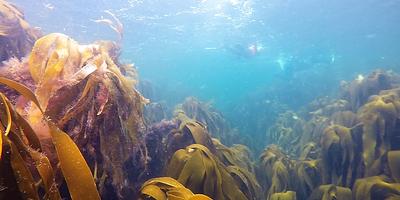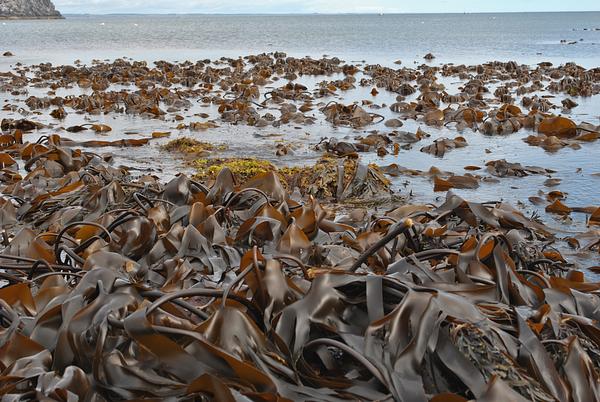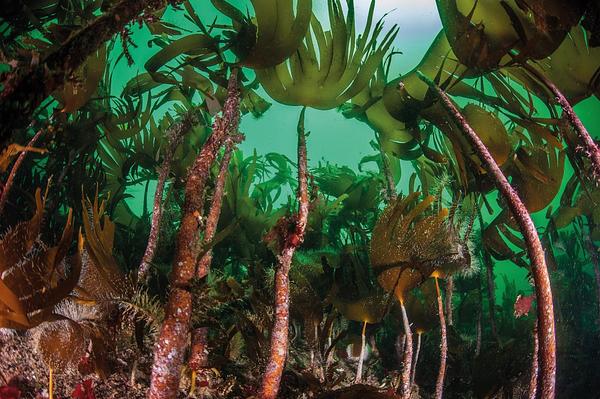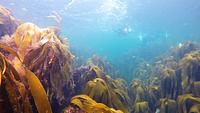
KELP FORESTS
Kelp is a large brown seaweed that thrives in cool, nutrient rich waters to depths of up to 45 metres.
When conditions are right, kelp can grow in densities that resemble underwater forests. These beautiful swaying habitats are not only home to a host of species but also protect coastlines from storms and absorb excess carbon from the atmosphere – globally kelp forests are estimated to absorb about 600 million tonnes of carbon a year!
INHABITANTS
Kelps
Kelps are the largest of the brown seaweeds – cuvie (Laminaria hyperborea), for example, can grow to 3 metres in length.
The UK has the highest number of kelps in Europe, with 7 of the 14 species found in Europe growing around our shores.
They come in 3 parts; a claw-like 'holdfast' holds the kelp onto the rocks; a long 'stipe' grows upwards to maximise access to sunlight (similar to a trunk of a tree); and the leafy-looking 'fronds' are the power houses that make food by photosynthesis and take in the nutrients from the sea they need to grow.
Some species of kelp can be found during very low tides on rocky shores. Common species to look out for are:
- Oarweed (Laminaria digitata) and cuvie (Laminaria hyperborea). At first these species look the same, except oarweed has a floppy, smooth stipe, and cuvie's stipe is rigid and rough.
- Sugar kelp (Saccharina latissima), easily identifiable by its single, thick, crumpled frond.
- Dabberlocks (Alaria esculenta) has thin, delicate fronds resembling feathers.

Other seaweeds & animals
The presence of so much kelp provides plenty of surfaces for seaweeds and sedentary animals to settle and grow. Their large fronds and stipes are often colonised by species such as beadlet anemones (Actinia equina), sea mats (Bryozoans) and light bulb sea squirts (Clavelina lepadiformis). Their tangled holdfasts also create a maze of nooks and crannies - perfect hiding places for worms, crustaceans and even the eggs of fish species like the lumpsucker (Cyclopterus lumpus).
A variety of grazers feed directly on the kelp, such as edible sea urchins (Echinus esculentus) and blue-rayed limpets (Patella pellucidum).

Kelp forests provide sheltered conditions that are ideal nursery grounds for juvenile fish such as cod, pollock and haddock – economically very important species. The smaller fish in turn attract larger predators like grey seals (Halichoerus grypus) and diving seabirds such as the Northern gannet (Morus bassanus) to forage around their canopies.
LOCALISED THREATS
- Harvesting - mechanical kelp dredging involves the removal of kelp for making products.
- Accidental damage by boats
- Human pollution
- Destructive fishing practices

